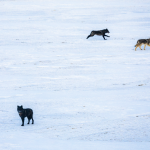See how Colorado Parks and Wildlife is working to minimize wolf conflicts on ranch land
The agency hosted reporters for a hands-on look at some of their most effective mitigation strategies
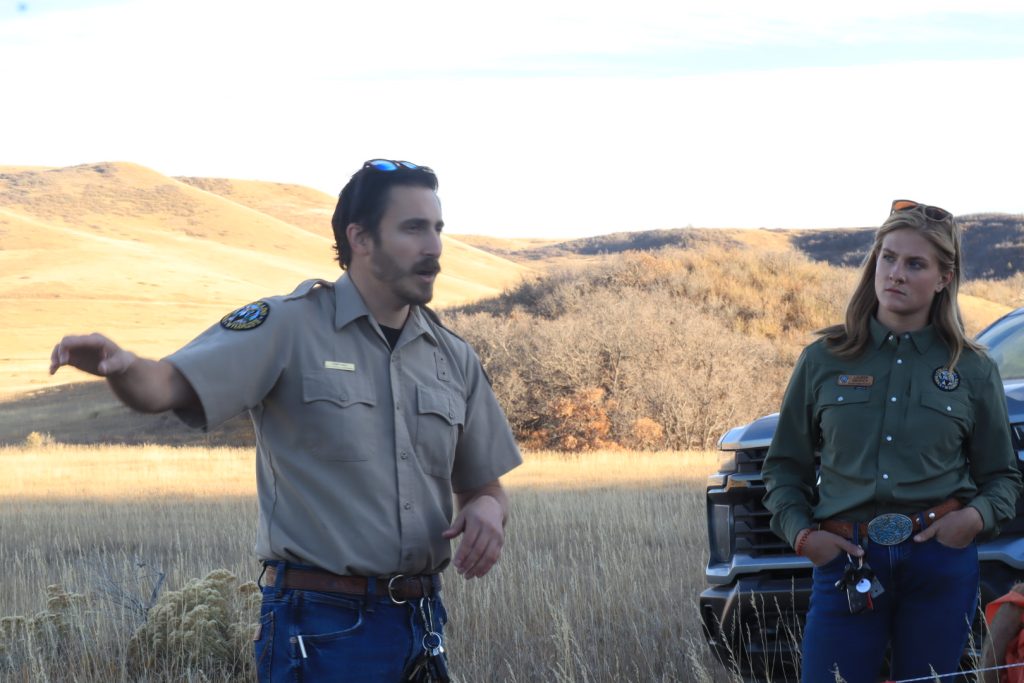
Robert Tann/Summit Daily News
From riders on horseback surveying the landscape to electric barriers to ward off prey, Colorado Parks and Wildlife is deploying a slew of tactics to prevent and reduce conflicts with wolves as it continues its multi-year reintroduction of the species.
The efforts come as Parks and Wildlife enters the third year of the state’s wolf reintroduction program, which began in late 2023 after Colorao voters approved the program the year prior. To date, the agency has released 25 wolves in western Colorado, which has led to the formation of four dens, at least 10 new pups and 11 confirmed wolf deaths.
Agency officials invited reporters on Thursday to a live demonstration of its conflict minimization tools, some of which have been deployed in the field. They also provide updated figures on the number of strategies implemented and the increase in staff capacity since the reintroduction program began in late 2023.
Nestled in the tranquil grasslands on the edge of Roxborough State Park less than 40 miles south of Denver, Parks and Wildlife walked reporters through various staged areas to showcase what their tools look like and how they work.
Officials also stressed that their strategies are often situational and depend on numerous factors, from geography and the nature of the wolf activity to what works best for the producer.
Some strategies have yet to be used in the wild, while others are just getting going as the agency scales its wolf operations. The agency has around 140 staff ready to respond to wolf-related incidents and a plethora of tactics at its disposal.
One of the most seemingly simple, yet effective, tools is fladry, which involves tying a line of interspersed flags — often red in color — around a perimeter. The red flags flapping in the wind can trigger an innate fear and avoidance in wolves. That fear response can be reinforced when the fladry is electrified.
Fladry has been deployed at 19 sites, with “zero depredations inside fladry enclosures,” according to Adam Baca, the state’s first-ever wolf conflict coordinator.
Baca acknowledged there’s been skepticism around using fladry as an effective deterrent. To a human, the thin line carrying flapping flags looks more like a car sales lot than an intimidating barrier.
“You’re telling me this is going to keep wolves out?” Baca joked.
But if you “implement correctly, there’s really good odds of success,” he said.
Baca said it’s up to a rancher to decide if they want to try it on their property. Like any tool, fladry does have its drawbacks. The barrier is more suited to smaller areas, and is ideal for temporary usage of around 45 to 90 days.
It also needs regular vigilance to be maintained, and snow-covered or frozen ground can make driving the stakes in to form the barrier particularly difficult, meaning extra machinery may be required.
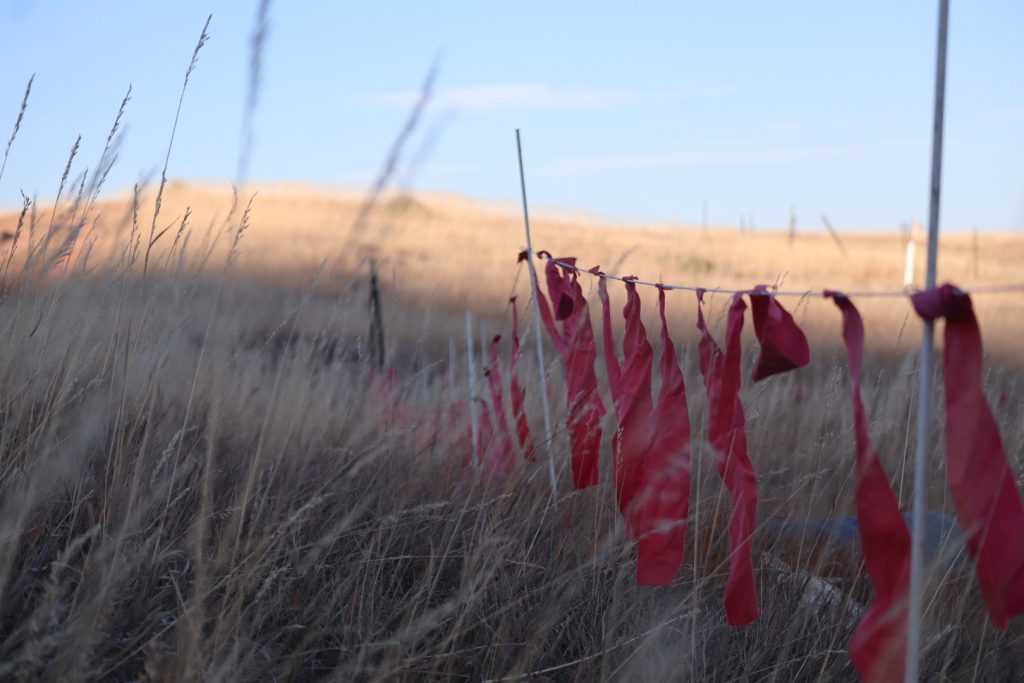
Another key strategy being deployed by Parks and Wildlife is range riding to scout the landscape. The practice can help detect injured, dead or sick animals, and can also be used to pick up on early signs of predator activity and where preventive efforts may need to happen.
While range riding typically conjures the image of scouts on horseback, riders have also traversed the landscape in ATVs, trucks or on foot. Parks and Wildlife have also utilized drones for aerial surveillance to supplement their on-the-ground activities. They also carry non-lethal “hazing” tools to scare off predators during any encounters.
The state currently employs two-full time range riders and eight contracted seasonal employees across Parks and Wildlife and the Colorado Department of Agriculture. The program, which launched this year, was one of the most anticipated and long-awaited of Parks and Wildlife’s wolf mitigation strategies.
Jesse Lasater, who comes from a family of sheep farmers and is one of the state’s two dedicated range riders, said a critical aspect of the program is the communication between the state and ranchers.
When range riders show up to a location, they’ll have a text thread between themselves and other Parks and Wildlife and department of agriculture staff, as well as the ranchers, to provide regular updates.
“Everyone’s updated daily,” Lasater said, “and so when you hit the ground and show up, you already know what has happened (during) the previous days and you know what can be expected to look for. And so that communication is really helpful.”
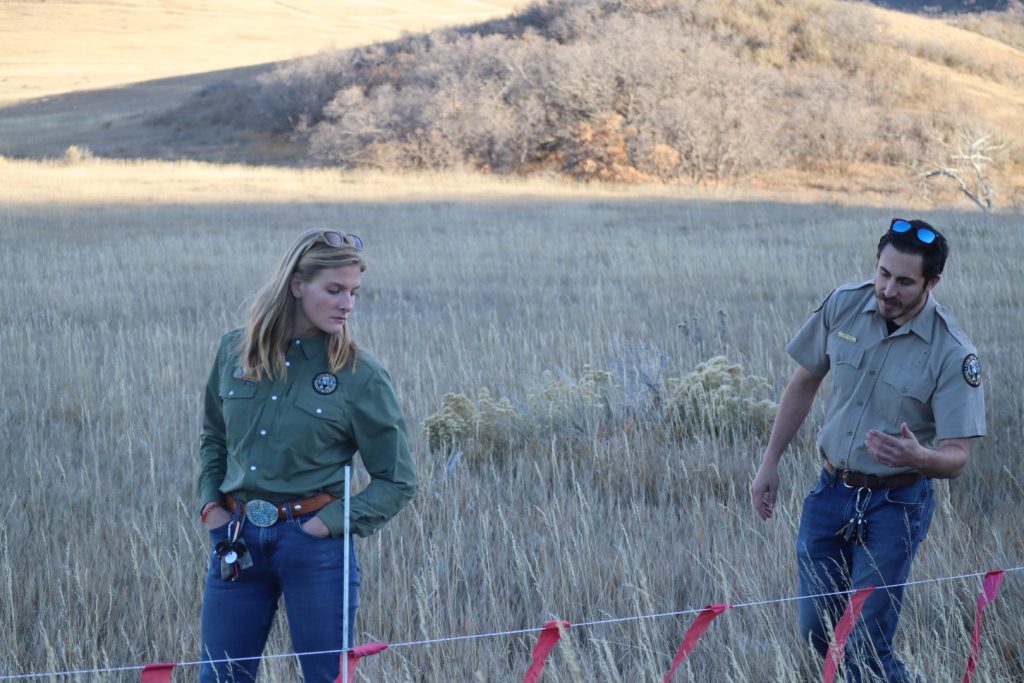
Along with range riding, another important wolf deterrent is proper carcass management. Shelby Neiberger, the state’s other dedicated range rider, showed how an electric bear fence — often used to protect tents in the wilderness — can also be used for carcass protection.
Neiberger said the fences can be found at many outdoor stores, and, coupled with a tarp covering the dead animal, can prevent predators, like wolves, from being attracted to livestock.
If wolves do begin to enter onto a ranch’s property, hazing is one way to deter the animals. Parks and Wildlife considered two types of hazing: non-injurous and injurious.
Non-injurous hazing can include chasing and yelling at a wolf, or even shooting near but not at it, to ward it off. This type of activity involves no physical contact, and no permit is needed for someone to engage in this type of hazing.
Injurious hazing may involve physical attacks like shooting rubber bullets, bean bag rounds or paintballs at the wolf. This type of response requires a permit from Parks and Wildlife.
Standing in a grassy field as the late afternoon sun fell behind the rolling hills behind her, Lauren Emerick, a wildlife damage specialist for Colorado Parks and Wildlife, demonstrated shooting pellets from a bright yellow gun that is “similar to a paintball gun.”
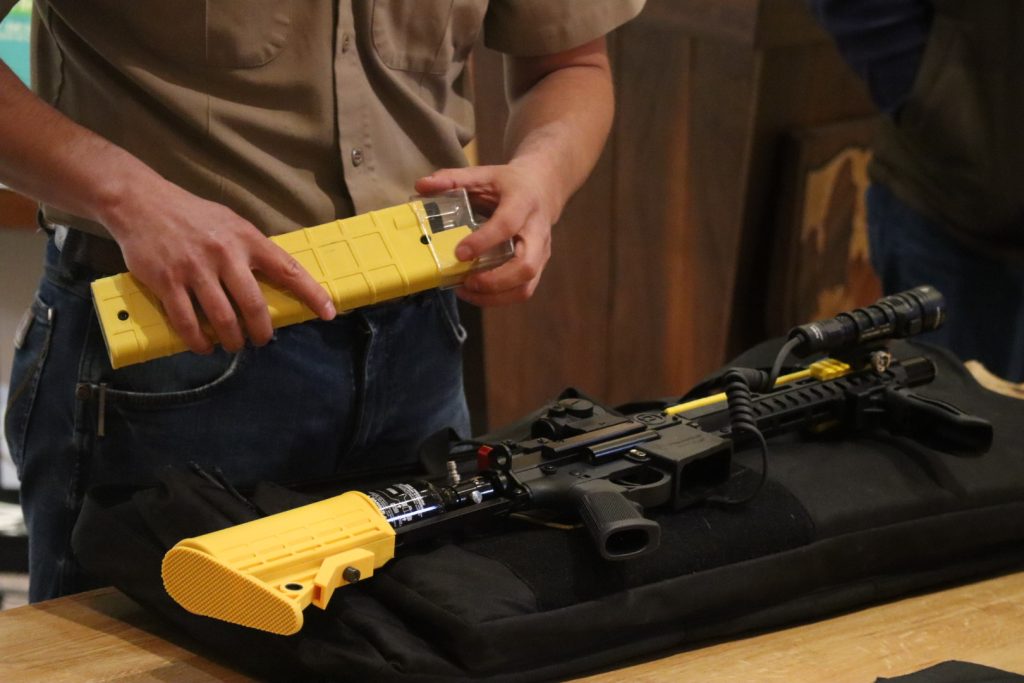
Firing a few rounds that erupted in baby powder, Emerick said the gun can also be effective at scaring off wolves even if it doesn’t directly hit them.
Parks and Wildlife has not yet used one of the guns on a wolf, something that “has largely come down to opportunity,” Emerick said. The guns are meant for close-range contact, and typically have an effective firing range of anywhere from 50 to 100 yards, depending on conditions.
“Ultimatley, it’s one of those tools where you have to be pretty darn close for it to work,” Emerick said.
In rare instances, Parks and Wildlife can take lethal measures against wolves that meet the definition of “chronic depredation,” which is when there are three or more depredation events within a 30-day period linked to the same wolf or wolves. Parks and Wildlife must have evidence that the wolf or wolves were responsible for at least one of those events.
To date, Parks and Wildlife have killed one wolf, a year-old pup connected to multiple livestock attacks in just over a week in Pitkin County. The wolf was killed in May.
Baca said Parks and Wildlife’s wolf conflict minimization efforts have come a long way since wolf relocation began in 2023. What started as a dedicated conflict minimization staff of just him has grown to include the range riding team and other partners.
That has helped lead to 19 successful fladrey installments, and nearly 40 total successful high-level conflict minimization efforts, including range riding, carcass management and hazing, Baca said.
Parks and Wildlife also maintains around 140 staff members ready to respond to wildlife incidents, including wolf-related issues. That’s not including partnerships with federal agencies and non-government organizations, which Baca said is vital to building out a robust response team as the reintroduction program continues.
“It would be brutal if it was just one small group of people or even just one agency,” Baca said. “In other states, this works because there’s coalitions and there’s teams of people to rely on each other.”

Support Local Journalism

Support Local Journalism
Readers around Steamboat and Routt County make the Steamboat Pilot & Today’s work possible. Your financial contribution supports our efforts to deliver quality, locally relevant journalism.
Now more than ever, your support is critical to help us keep our community informed about the evolving coronavirus pandemic and the impact it is having locally. Every contribution, however large or small, will make a difference.
Each donation will be used exclusively for the development and creation of increased news coverage.


